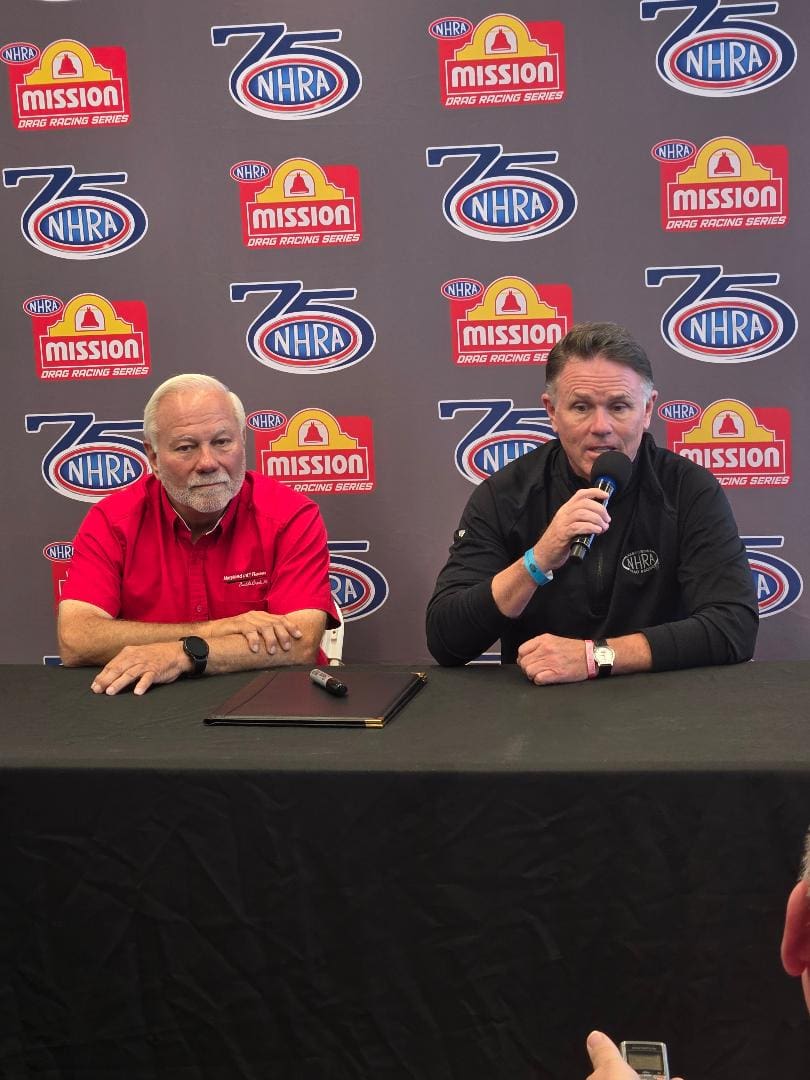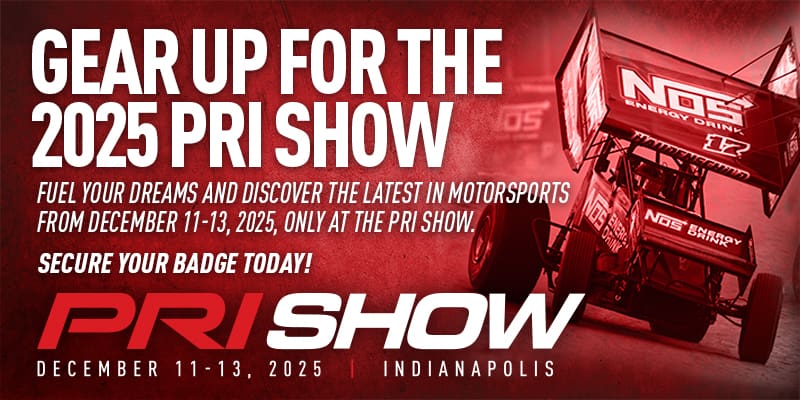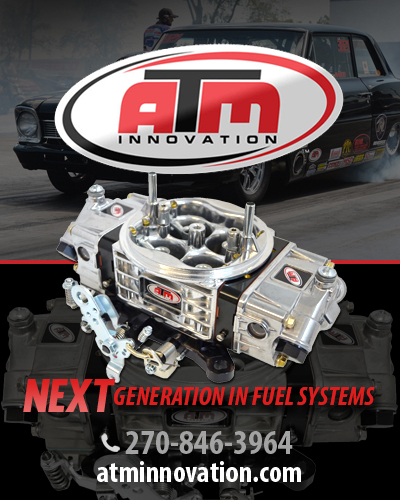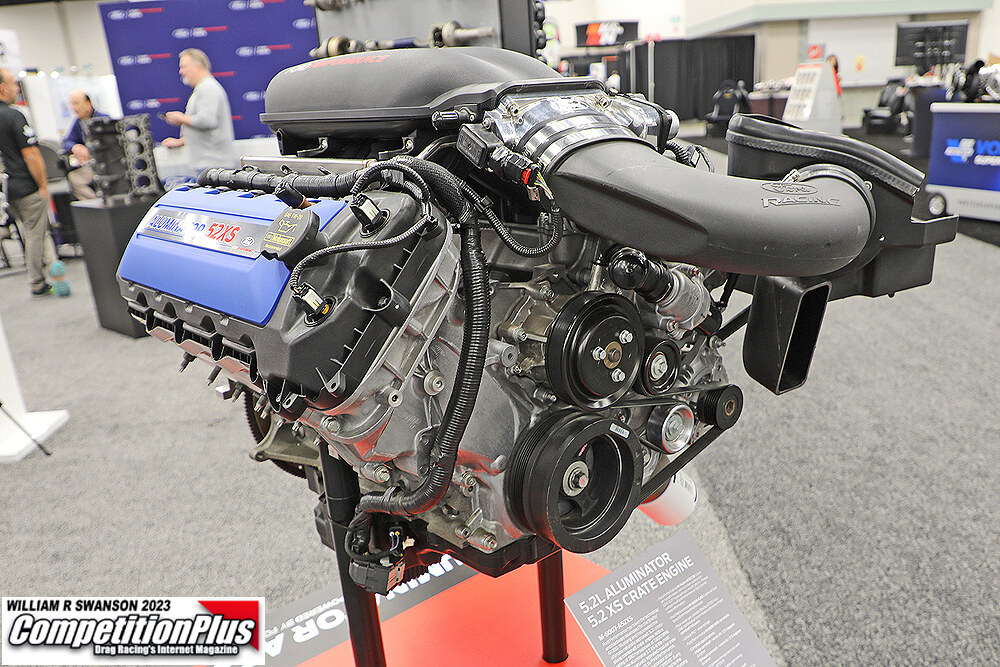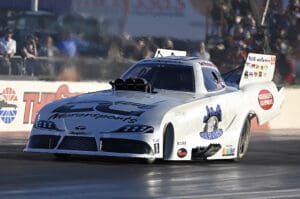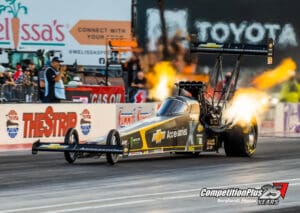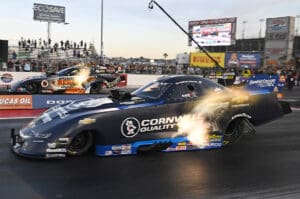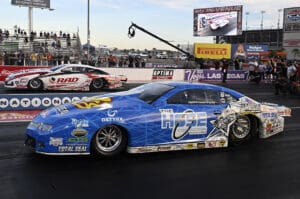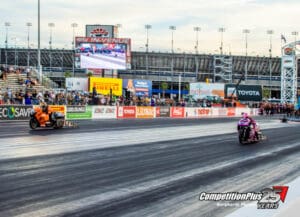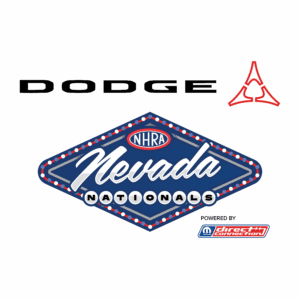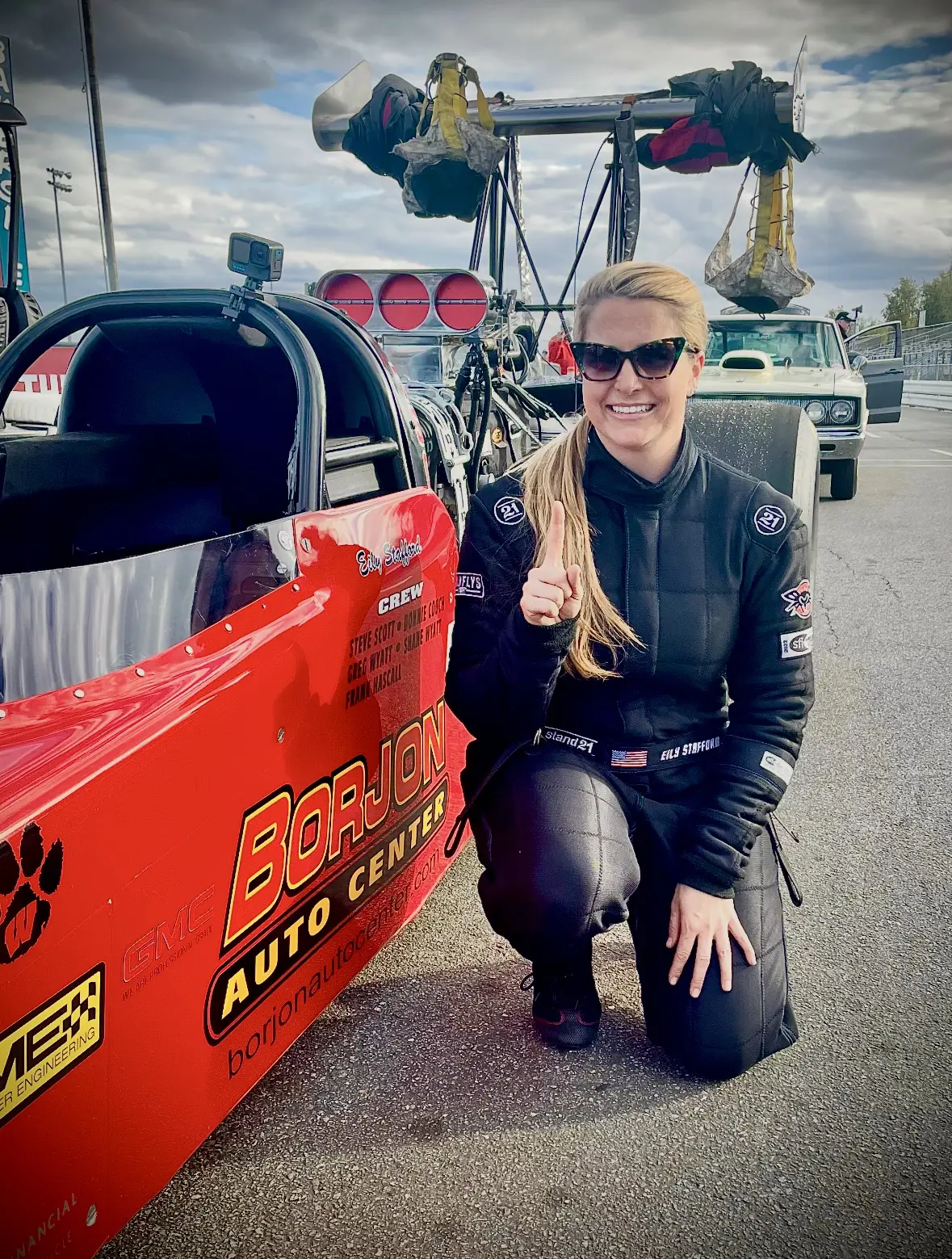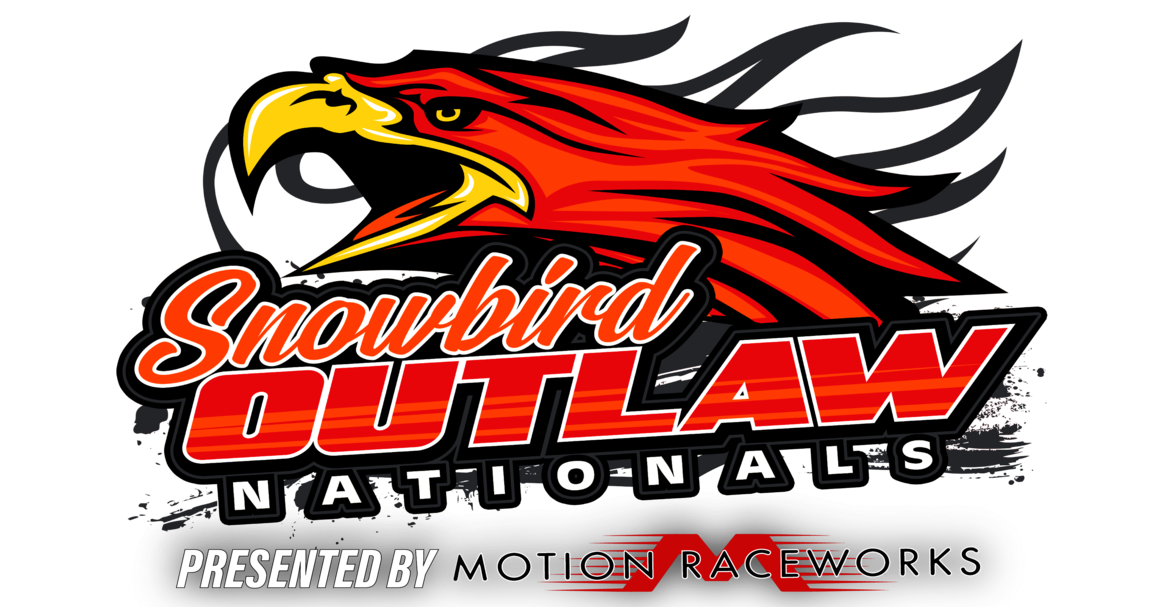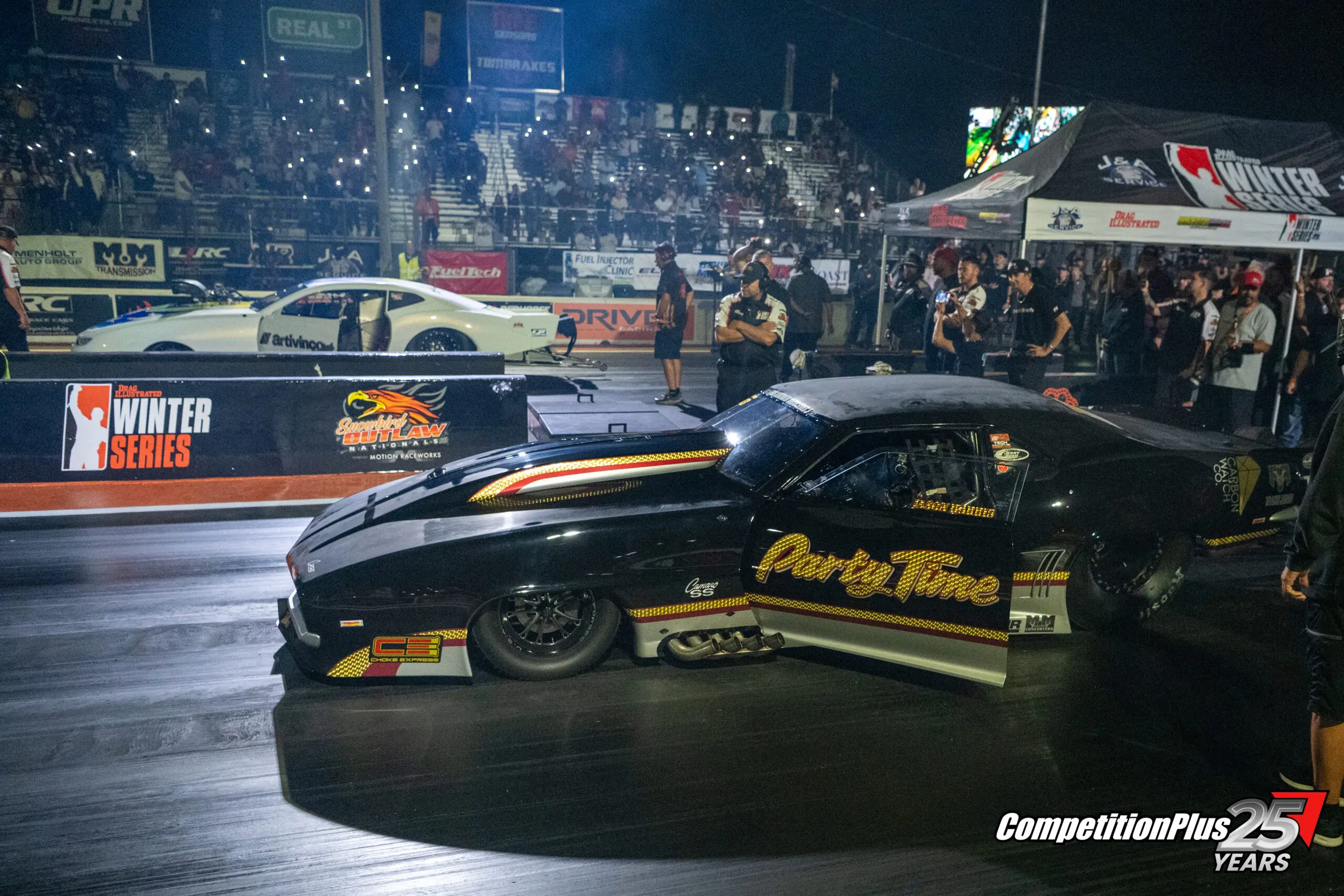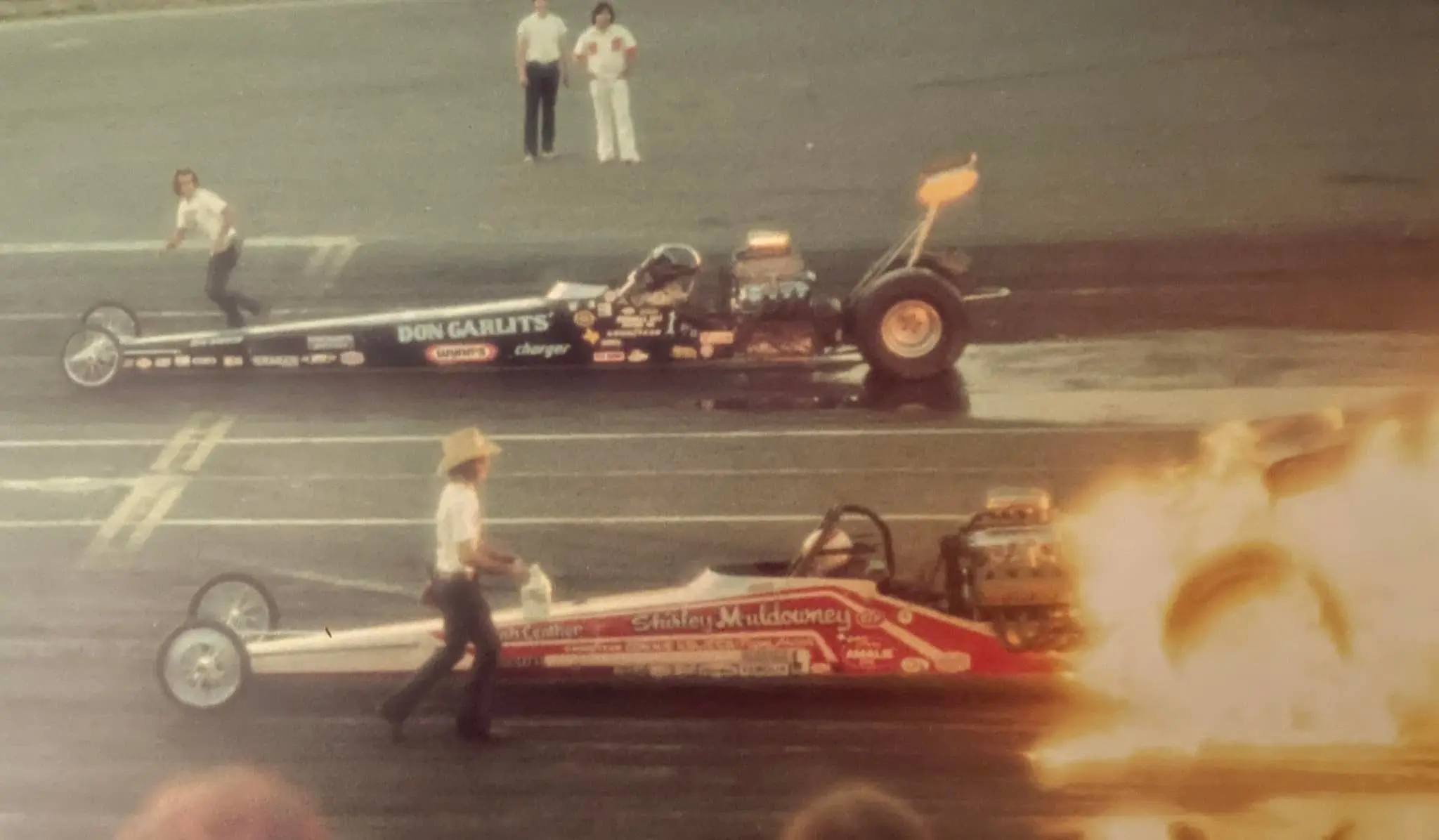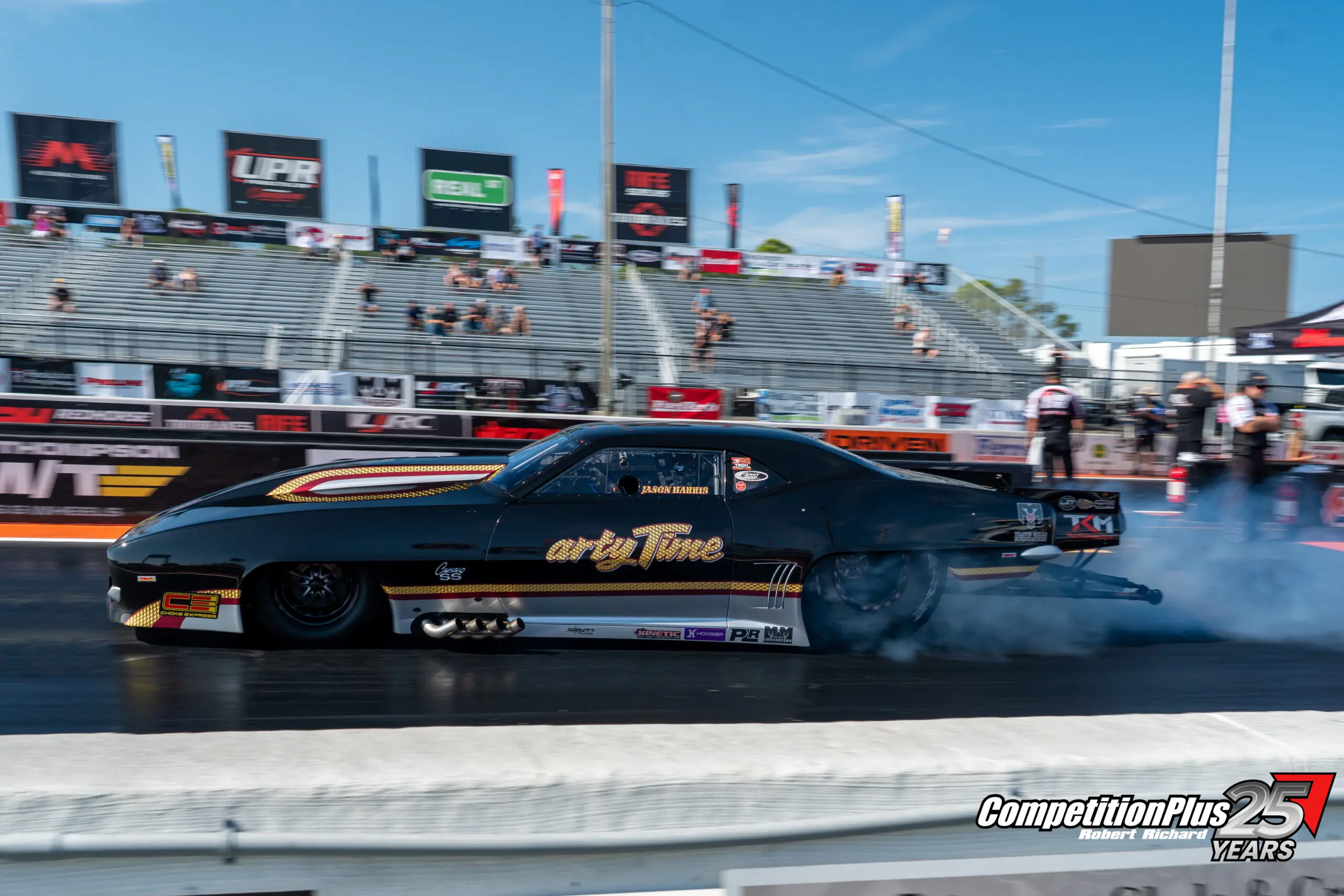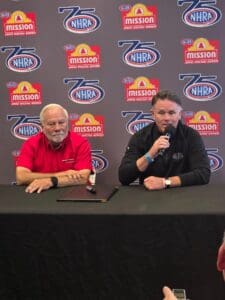The National Hot Rod Association is preparing for one of its most significant expansions in decades, adding Maryland International Raceway to the 2026 schedule in a move that echoes the sport’s historic “Super Season” of 1970.
The commitment was reenforced on Sunday at the U.S. Nationals at Lucas Oil Indianapolis Raceway Park, where NHRA President Glen Cromwell and Maryland International Raceway owner Royce Miller signed the agreement inside the new Wally Parks Tower. Beginning next May, Miller’s track in Mechanicsville will host the Potomac Nationals, bringing NHRA championship drag racing to the Baltimore-Washington corridor for the first time.
The significance of the move goes beyond one new race. For long-time observers, the addition immediately brought back memories of 1970, when the NHRA nearly doubled its national event schedule. That season, often called the “Super Season,” marked a turning point that altered the trajectory of drag racing. It demonstrated that the NHRA could expand beyond a handful of events, build new markets, and grow its professional categories into a true national touring series.
Before 1970, NHRA staged just four national events each year – Pomona, the Springnationals, the U.S. Nationals, and the World Finals. In one bold step, the sanctioning body added Gainesville, Dallas, and Ontario, expanding to seven races. The year also introduced Pro Stock, a class that immediately became a cornerstone of the sport. By the end of that season, drag racing had gone from a niche schedule to a national enterprise. Many inside the sport see the addition of Maryland International Raceway in the same light – a step designed to reshape the future, not just the following season.
Cromwell said the 2026 expansion is built on similar principles. “It’s time for the NHRA to move forward,” he said. “It’s time for us to go to new tracks, new opportunities. No more are we going to be sitting still.”
The Maryland stop will not come alone. The sanctioning body also announced South Georgia Motorsports Park as a new venue, giving NHRA two fresh markets for 2026. Together, they represent the first new national event facilities in more than a decade, signaling an active growth strategy at a time when the series is celebrating its 75th anniversary. Cromwell noted that the milestone also coincides with America’s 250th birthday.
“It’s a great year for the country,” he said. “We are true Americana, and what better place to celebrate that than in new markets with long histories of drag racing fans.”
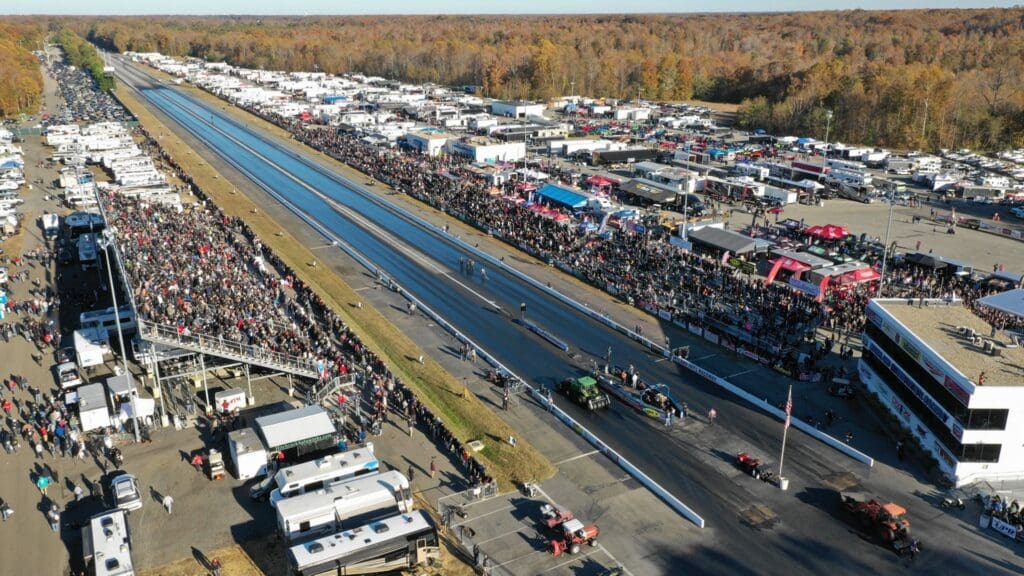
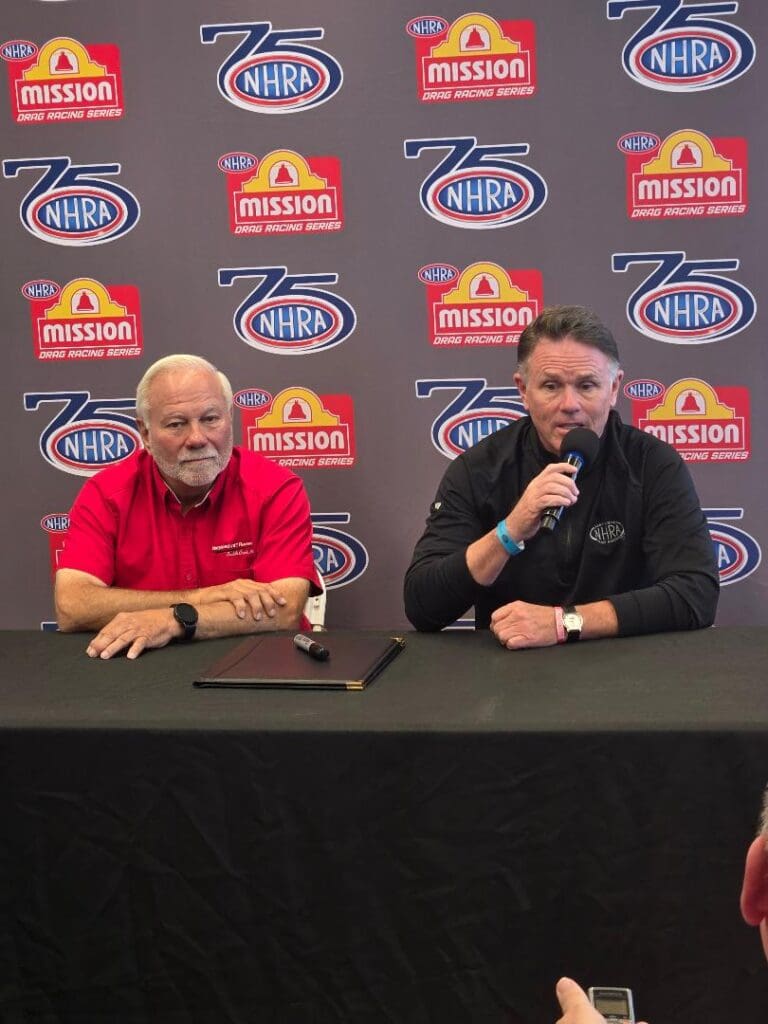
The National Hot Rod Association is preparing for one of its most significant expansions in decades, adding Maryland International Raceway to the 2026 schedule in a move that echoes the sport’s historic “Super Season” of 1970.
The commitment was reenforced on Sunday at the U.S. Nationals at Lucas Oil Indianapolis Raceway Park, where NHRA President Glen Cromwell and Maryland International Raceway owner Royce Miller signed the agreement inside the new Wally Parks Tower. Beginning next May, Miller’s track in Mechanicsville will host the Potomac Nationals, bringing NHRA championship drag racing to the Baltimore-Washington corridor for the first time.
The significance of the move goes beyond one new race. For long-time observers, the addition immediately brought back memories of 1970, when the NHRA nearly doubled its national event schedule. That season, often called the “Super Season,” marked a turning point that altered the trajectory of drag racing. It demonstrated that the NHRA could expand beyond a handful of events, build new markets, and grow its professional categories into a true national touring series.
Before 1970, NHRA staged just four national events each year – Pomona, the Springnationals, the U.S. Nationals, and the World Finals. In one bold step, the sanctioning body added Gainesville, Dallas, and Ontario, expanding to seven races. The year also introduced Pro Stock, a class that immediately became a cornerstone of the sport. By the end of that season, drag racing had gone from a niche schedule to a national enterprise. Many inside the sport see the addition of Maryland International Raceway in the same light – a step designed to reshape the future, not just the following season.
Cromwell said the 2026 expansion is built on similar principles. “It’s time for the NHRA to move forward,” he said. “It’s time for us to go to new tracks, new opportunities. No more are we going to be sitting still.”
The Maryland stop will not come alone. The sanctioning body also announced South Georgia Motorsports Park as a new venue, giving NHRA two fresh markets for 2026. Together, they represent the first new national event facilities in more than a decade, signaling an active growth strategy at a time when the series is celebrating its 75th anniversary. Cromwell noted that the milestone also coincides with America’s 250th birthday.
“It’s a great year for the country,” he said. “We are true Americana, and what better place to celebrate that than in new markets with long histories of drag racing fans.”
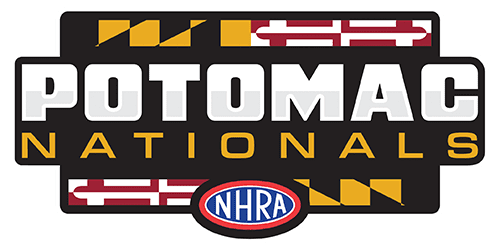
For Miller, the announcement was the culmination of decades of work. He has operated MIR for more than 30 years, building it into one of the most respected independent tracks in the country.
“We were NHRA the first two years I had the track,” Miller said. “We’ve been with different sanctioning bodies since then, but now we’re bringing the premier facility-prepared show to our market, and I really believe they’re ready for it. I’m proud to be able to have taken the track to a level that we can host an NHRA national event at.”
That sense of readiness was validated almost immediately. Fans in Southern Maryland, Northern Virginia, and the greater Washington-Baltimore corridor began securing tickets within days of the announcement. Miller said the demand was strong enough that the track will cap ticket sales, ensuring manageable crowd sizes and fan experience, much like the strategy already planned for South Georgia.
“Our market, we do have some loyal, dedicated fans,” Miller said. “This past weekend after the announcement, I had guys come up, show me, ‘I already got my ticket. Thank you for bringing the Nationals to Maryland.’”
Cromwell praised Miller’s reputation as a promoter and facility operator, saying it gave NHRA the confidence to take the step into a new market. “He’s the best of the best from a logistics standpoint,” Cromwell said. “That gave us confidence this was the right move.”
The Baltimore-Washington area has long been discussed as a possible NHRA target. For years, the sanctioning body weighed whether the New York market was the next major frontier. But Cromwell said the nation’s capital region offers demographics, visibility, and history that make it uniquely suited to showcase professional drag racing. “It’s a great DMA,” he said. “We haven’t been there. It gets new fans, new eyeballs. It’s a big year next year for America. It’s 250 years, and we’re going to celebrate it together. We are true Americana, and what better place to celebrate that?”
Maryland International Raceway brings a strong reputation to the national stage. Known for door-slammer heavy shows, outlaw Pro Mods, and specialty events, the facility has built a loyal following. But the addition of Top Fuel dragsters and Funny Cars – 12,000-horsepower machines never before staged there in a national event setting – promises a new chapter. Miller said the region has been hungry for nitro racing. “They’re hungry,” he said. “It’s been a while since we’ve been able to show this.”
Part of Miller’s credibility comes from his background as a racer. In 1989, he won the Grand Molson NHRA national event at Sanair in Quebec, the only NHRA national he entered as a driver. “I attended one NHRA national event in all the years that I raced,” Miller said. “I won that one and ended up buying the track and never could go back. I truly believe understanding, from a driver’s standpoint, what it means to a racer makes a difference.”
That perspective has guided his decisions as a track operator. He said he has always sought to balance facility improvements with racer and fan experience, borrowing lessons from promoters like the late Bill Bader Sr. of Norwalk and Vinny Napp of Englishtown. “Some of the best ideas I have are stolen anyway,” Miller admitted.
Looking ahead, Miller acknowledged the challenges of preparing MIR for national event scrutiny. Planned upgrades include taller retaining walls and refinements to spectator areas, though the facility’s property size means maximizing existing space will be critical. “After 36 years here, I have every square inch of it in use,” Miller said. “We’re making the most use of the space we have.”
Still, he stressed that racing is about more than infrastructure. “The racing between the guardrails is imperative,” he said. “But what happens outside the guardrails is just as important. It’s the camaraderie, the social aspect. When a race is over, everybody’s in the pit area sharing family time. Some of their best memories revolve around racing, or a particular track. That’s always on my mind.”
The parallels with 1970 become sharper with each step. Then, NHRA founder Wally Parks gambled on expansion, adding three new stops and introducing a new professional class. The risk turned out to be the foundation for the modern touring series. Today, NHRA again faces a pivotal moment. With South Georgia and Maryland joining the calendar and a potential replacement for the second Charlotte event still to be announced, the sanctioning body is signaling a willingness to evolve at a scale not seen in years.
For competitors, the Potomac Nationals will represent another marquee stage to showcase sponsors and chase points. For fans, it will be the chance to witness nitro dragsters and Funny Cars in a region long starved for national-level competition. And for NHRA, it is proof that the series is intent on growth rather than retrenchment.
As the NHRA celebrates 75 years, the echoes of 1970 are unmistakable. Back then, expansion reshaped the future of the sport. Now, with new markets, capped ticket sales to heighten demand, and bold leadership from both the sanctioning body and its partners, the “Super Season” spirit lives again.
Miller, who has seen drag racing from the driver’s seat and the promoter’s tower, put the opportunity in simple terms: “If you can’t entertain the fans, we’re in the wrong business.”





